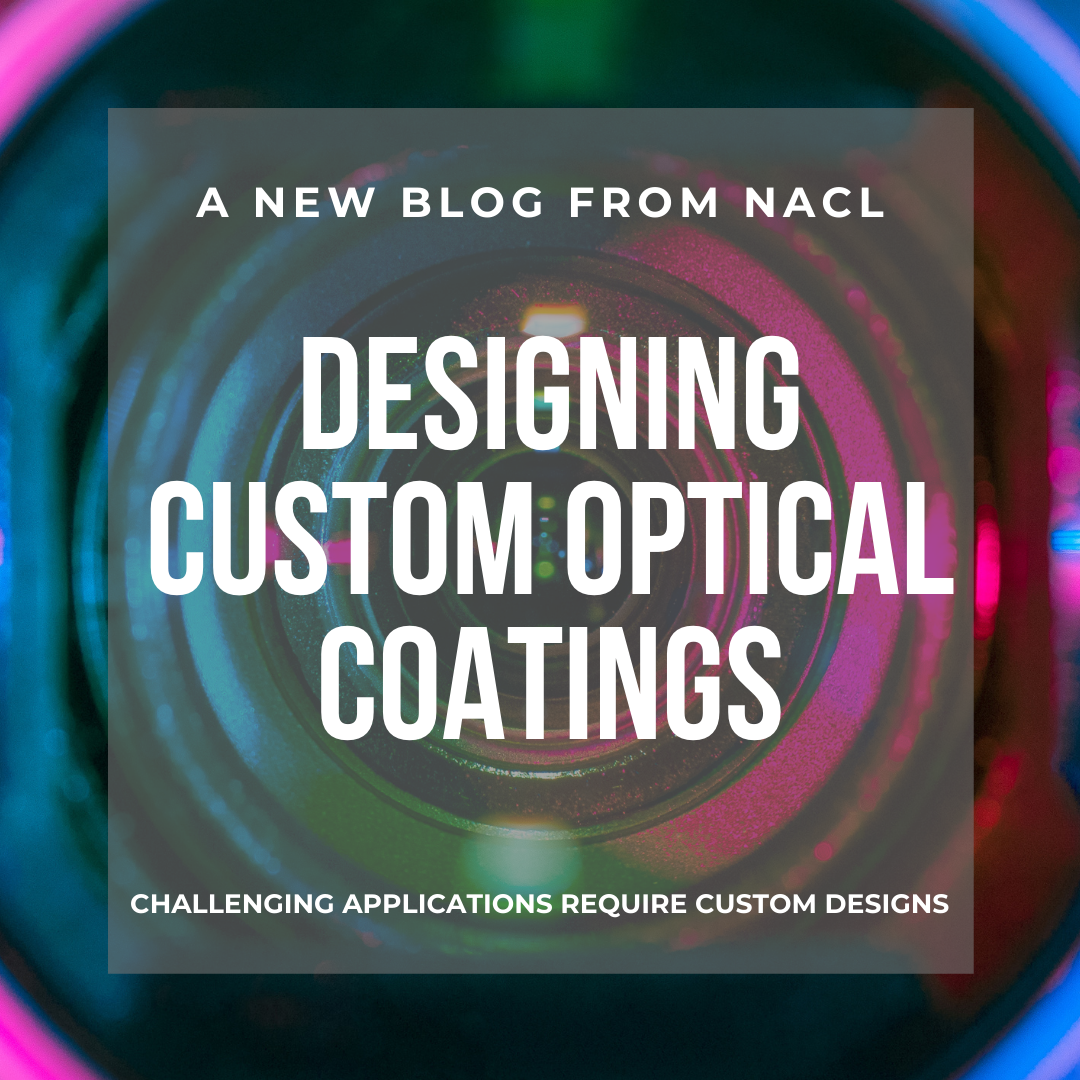Many coating vendors supply what is termed “off the shelf” coating formulas available for common substrate types and wavelength ranges. These coatings are tested and approved for a variety of applications and allow for flexibility when assisting a customer with a quick turn or an on-going coating project.
Things get slightly more sophisticated when a customer has a challenging application requiring a custom designed coating formula. These scenarios may require a coating design person to engineer a single or multilayer coating in which the transmittance , reflectance , and or absorptance values are specified at a specific number or range of wavelengths , angles , and in some cases polarizations of light. Complexity also increases based on the substrate type. Most standard index glass applications are simpler to design being that the base material refractive index is well known and documented at a variety of wavelengths and temperatures. With more exotic glass types that have higher refractive indices and extinction coefficients the design becomes more difficult as more evaporative materials need to be considered to counter act the unique index of the base material.
A good way to think about a multilayer thin-film coating is as an independent system of different layers that influence the light in a controlled manner to achieve the desired goal of the application. As the name indicates, there are many layers in a multilayer film. Each layer has a tightly designed thickness, which corresponds to its unique refractive index and extinction coefficient of the individual layer and the adjacent layers within the film. So, if you consider the film as an independent system, it will then make sense that the more complex the specification is, the more complex the film then must be to address the challenges of the application.
Now that you understand a little bit of the mindset that goes into the design process, it is important to know what parameters should be known to help a coating partner design a custom optical coating. If you do not have all the details up front, that is not a problem. Most coating designers and service providers can help “fill in the blanks” so that your project is successful.
Optical Drawing – Is it glass, plastic, crystalline, metal? Let us know what your optic is made from and what the dimensions are. If you don’t have a formal drawing, we can usually work with dimensions including thickness or even a photograph of the optic.
Coating Type – Do you need an anti-reflective coating? Is it a reflector or some type of pass filter? The coating type helps us determine the machine we use and lets us access our matrix of available coatings.
Optical Specifications- Most importantly we need to know the operating wavelength, the desired reflectance and or transmittance along with the angle of incidence your coated optic will be operating at.
Mechanical Specifications- Most times this is defined as a military specification that covers humidity, thermal range, durability, and adhesion. The mechanical specifications also include the clear aperture or the “critical” area of your optic where the coating must be conformal and uninterrupted by tooling.
Estimated Usage or Order Quantity- How many parts do you hope to have coated? This helps us determine if your program will be priced on an individual optic basis (unitized) or in cases that the usage is less than a full chamber load we will assess an allotment fee accounting for the time, materials and complexity of the coating desired.
Did we miss anything? If you are working on an on-going job and having issues with a current specification, that info is very valuable to us. We can perhaps suggest a different approach or way to achieve your project goals using alternative methods. Any background data will help us help you become successful with your coating project, and hopefully help us establish a long-lasting relationship with your company.






